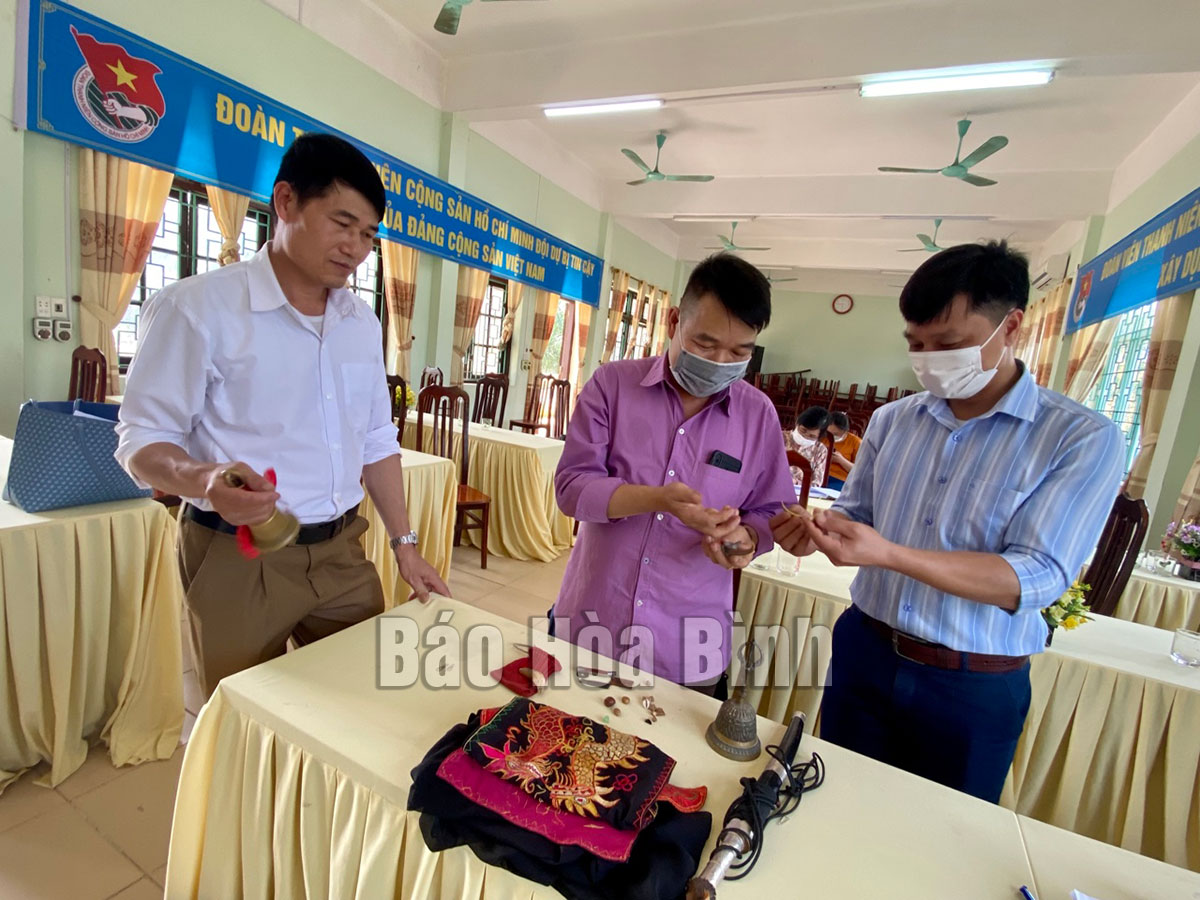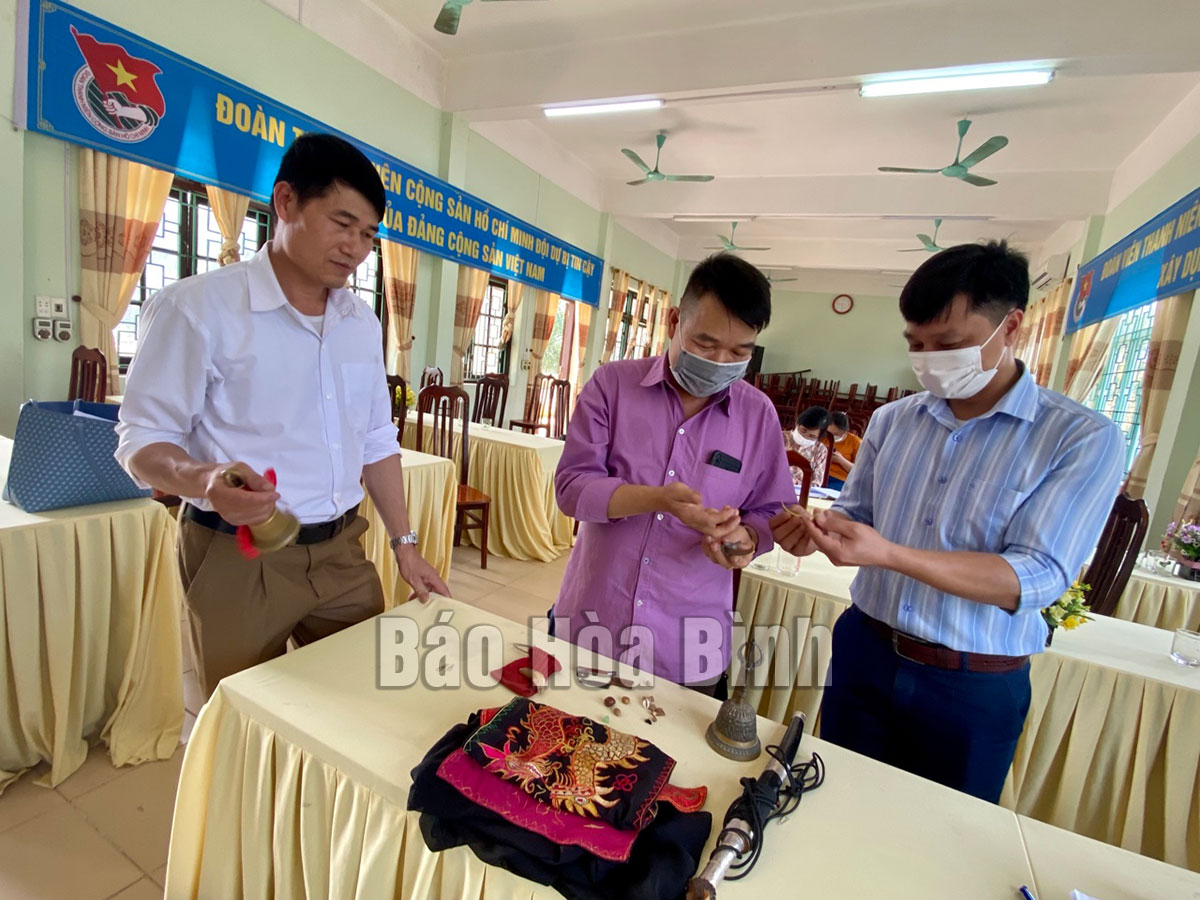
(HBO) – A survey in northern Hoa Binh province, conducted by the Committee for Ethnic Minority Affairs under the provincial People's Council in quarter I, 2022 has revealed the region is home to 786 intangible cultural heritage elements.
Two elements, in particular, have been recognized as national intangible
cultural heritages, namely Mo Muong and Muong gong cultures of the region.

Conducting survey
of Mo Muong heritage.
The survey showed that five types of traditional
arts in Hoa Binh are falling out of practice, leaving them on verge of
oblivion. The Committee for Ethnic Minority Affairs under
the provincial People's Council stated the provincial People's Committee direct
the Department of Culture, Sports and Tourism to coordinate research, advise
and submit a draft resolution to the Provincial People's Council on the
preserving the culture of ethnic minorities in the province. The plan should
focus on preserving the language and writing for the next generation, it said.
The Department of Culture, Sports and Tourism stated
it would coordinate with the Committee for Ethnic Minority Affairs to implement
the project "Preserving and promoting traditional values of ethnic
minorities and tourism development". At the same time, it suggested to open
training courses on preserving culture for cadres and civil servants at all
levels and village elders in the community./.
The People’s Committee of Lac Son district held a ceremony on April 28 to receive the provincial relic certificate for the ancient rock carving site at Suoi Co stream, located in My Thanh commune.
A special music show titled "The country is in the fullness of joy” has been held at Hoa Binh Square in Hoa Binh city in celebration of the 50th anniversary of the liberation of the South and national reunification (April 30, 1975–2025).
The People's Committee of Lo Son commune, Tan Lac district, has organised the local annual traditional stream fishing festival on April 19 - 20.
As a land deeply intertwined with human history and Vietnam’s millennia-long journey of nation-building and defence, Hoa Binh is often revered for its epic tales and legends.
Residents of Hoa Binh boast a rich cultural identity, reflected in their unique language, traditional attire, customs, and folk melodies – described as "sweet as honey, clear as a mountain stream.”
Lac Son district’s Vu ban town held the 2025 Truong Kha temple festival on April 12–13 (the 15th–16th days of the third lunar month). Since its revival in 2019, the festival has been organised every three years, preserving valuable intangible heritage while meeting the community’s cultural and spiritual needs.



